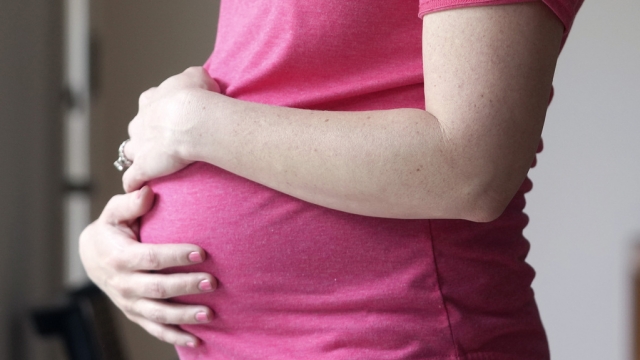They are the most vulnerable patients, and their care is being called into question.
"Moms and babies are intertwined, if you think about it, in their health care, right? And infant mortality is really about mortality of babies up until their first year of life," Dr. Elizabeth Cherot, President and CEO of March of Dimes, said.
New data released by the Centers for Disease Control and Prevention reveals that the infant mortality rate in the U.S. rose 3% from 2021 to 2022, marking the first year-to-year increase in 20 years.
"When I look at that data and see that black babies are two times more likely to die before their first birthday compared to their white counterparts, we are really heading in the wrong direction," Cherot said.
Dr. Elizabeth Cherot is the president and CEO of March of Dimes, a nonprofit working to improve health care access and treatment for women and infants. She says maternity care deserts are at the core of this increase.
"And a lot of people say, well, why does this matter? Moms and babies are really a window into the health of the nation," Cherot said.
So, what is a maternity care desert? March of Dimes classifies a county as a maternity care desert if there are no hospitals providing obstetric care, no birth centers, no OB/GYN's, and no certified nurse midwives—a dangerous situation for mothers and their babies. And unfortunately, counties lacking these critical resources are becoming more and more common. According to a 2022 report by March of Dimes, "areas where there is low or no access affect up to 6.9 million women and almost 500,000 births across the U.S."
To put those numbers into perspective, March of Dimes says, "Approximately 12% of births occur in counties with limited or no access to maternity care." This report also notes that there's been a "2% increase in counties that are maternity care deserts since our 2020 report." So what's causing these deserts to grow?
SEE MORE: Maternity leave benefits unavailable to moms who deliver stillbirths
"Everything goes back to money, costs, and financial distress," Dr. Peiyin Hung said.
Dr. Peiyin Hung is an assistant professor in the Arnold School of Public Health at the University of South Carolina. Hung's career has focused on researching rural health disparities and women's health.
She says hospitals and health centers in many rural communities have been scaling back on services for women and their babies amid money woes.
"Sometimes obstetric units are the first to go when a hospital faces financial distress," Hung said.
With nowhere to turn, many women find themselves having to commute long distances for care.
"We actually found that among all the rural counties in the United States, those counties that have higher proportion of African-American reproductive-age women have much higher likelihood of experiencing of losing their local maternity care units," Hung said.
But it's not just rural counties that are suffering. Maternal care deserts are also popping up around urban counties as well. So, the big question remains: what's being done to address these deserts?
"We have started things like telemedicine and advocating for that on a state level because we know that that's an access issue that can solve that. We also love our mobile health units," Cherot said. "We're actually in Ohio. We're in Washington, D.C.; we're in Arizona; we're launching in Texas. We've got one going, launching in New York City. We are super excited about this as a program that we think is really sustainable and scalable, but we need partners to be able to do it."
For those unsure what the options are, Cherot recommends talking to a health care professional you trust and notes that there are organizations out there that can lend a hand.
"I think if we can continue to focus on moms and babies, we can really elevate to getting closer and closer to changing our numbers on morbidity and mortality. We have to," Cherot said.
Trending stories at Scrippsnews.com




